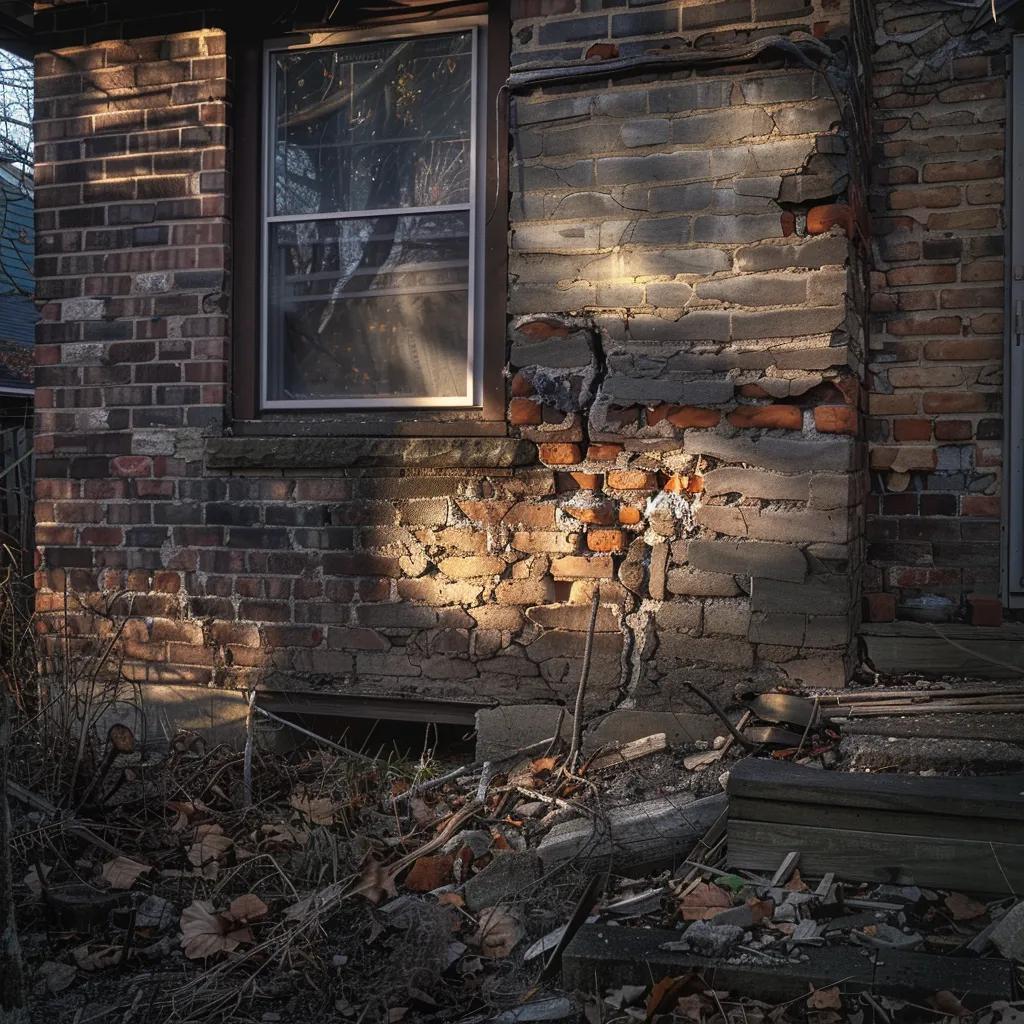The Impact of San Antonio Weather on Home Foundations
San Antonio’s weather can significantly impact home foundations, leading to costly repairs. Homeowners often underestimate how temperature changes and uneven rainfall can cause structural damage. This article will explore how these weather patterns influence foundation stability and highlight essential preventive measures. Readers will learn to identify the signs of foundation issues and understand when to seek professional help. By addressing these critical topics, homeowners can protect their investments and maintain the integrity of their structures against San Antonio’s unique climate challenges.
Understanding San Antonio’s Unique Weather Patterns
San Antonio experiences a unique climate characterized by hot summers and mild winters. These temperature fluctuations can lead to shifts in the soil beneath homes, impacting the stability of foundations over time.
The long dry spells in the region cause soil to shrink, creating voids around the foundation. As a result, homeowners may notice cracks in walls and other signs of structural distress, prompting the need for remedies like putty knife applications to fill in small fissures.
Heavy rains, often seen in the spring, can further exacerbate foundation issues. The sudden influx of moisture causes the soil to expand, putting pressure on the foundation and potentially leading to additional cracks in walls.
A well-maintained lawn can help mitigate some foundation problems by absorbing excess water. Proper landscaping techniques contribute to directing water away from the foundation, reducing the risk of water damage to concrete structures.
Understanding these weather patterns is essential for any homeowner in San Antonio. Recognizing the signs of foundation problems early can save significant repair costs and ensure a safe living environment in the long term.
The Influence of Temperature Fluctuations on Foundations
Temperature fluctuations in San Antonio significantly affect soil composition and, consequently, foundation stability. Heat causes soil to dry and shrink, potentially leading to voids that compromise structural integrity. Conversely, cold spells can lead to freeze-thaw cycles that impact the foundation. Proper drainage and timely home repair using materials like joint compound can help maintain a stable floor and prevent worsening issues.
How Heat Affects Soil Composition
Heat in San Antonio significantly impacts soil composition, often leading to shrinkage. As temperatures rise, moisture levels in the soil decrease, resulting in voids around the foundation. Such changes can create stress on concrete slabs, making them more susceptible to cracking and long-term damage.
A structural engineer may recommend reinforcement strategies to counteract these effects. Techniques could include adjusting drainage systems or adding materials around the foundation to help stabilize the soil. Effective measures can serve to prevent costly repairs by addressing potential weaknesses before they arise.
Homeowners should consider maintaining a well-watered mat of grass around their properties, as it can help retain moisture in the soil. This practice reduces fluctuations caused by heat and may protect the stability of home foundations. Awareness of how heat affects soil can empower residents to take proactive steps in foundation maintenance.
The Impact of Cold Spells on Foundation Stability
Cold spells in San Antonio can significantly contribute to foundation issues, particularly due to the frost that forms in the soil. As temperatures drop, the moisture in the ground can freeze, leading to expansion and contraction that places stress on foundation materials. This process can result in settlement, causing cracks and misalignment in the structure.
During these colder periods, homeowners must pay close attention to signs of foundation distress, such as cracks in walls or uneven floors. Early detection of such problems can avert more extensive damage and expensive repairs. Regular inspections can help identify potential concerns before they develop into significant foundation issues.
Implementing preventative measures is essential during cold spells to maintain foundation stability. Homeowners are advised to insulate exposed piping and ensure proper drainage around their property. These actions not only promote roof and foundation integrity but also minimize the risk of frost-related damage, safeguarding the home against future complications.
The Role of Rainfall and Drought in Home Integrity
Heavy rainfall can lead to foundation erosion as excessive moisture infiltrates the soil, causing stress on the structure. Conversely, drought conditions can result in cracks, compromising structural integrity. These two contrasting weather patterns play a significant role in foundation stability, underscoring the need for homeowners to understand their impact on long-term renovation and repair strategies.
Effects of Heavy Rain on Foundation Erosion
Heavy rain in San Antonio can significantly compromise the integrity of home foundations. The excessive moisture increases soilhumidity, leading to foundation erosion as the soil becomes saturated and unstable. Leaking water from improper drainage can further impact the stability of the structure, making it crucial for homeowners to manage water flow effectively.
When rainwater collects around foundations, it can erode the soil that serves as an anchor for the home. This erosion may result in shifting or settling of the foundation, which can create cracks in walls and uneven floors. Homeowners should remain vigilant for signs of these issues, as addressing them early can prevent the need for costly renovations in the future.
To mitigate the effects of heavy rain, maintaining proper landscaping is essential. Planting vegetation that absorbs moisture can help regulate humidity levels around the foundation and minimize erosion. Additionally, ensuring gutters and downspouts direct water away from the home will protect vulnerable areas and prevent water damage to wooden structures and other vital components of the home.
Cracks Formed During Drought Conditions
Drought conditions in San Antonio can create significant challenges for home foundations, particularly through the formation of cracks in walls. As soilmoisture diminishes, the earth beneath homes shrinks, leading to gaps that put added stress on the foundation. This issue is particularly prevalent during extreme weather periods when consistent dry spells contribute to further soil contraction.
Homeowners should remain vigilant for early signs of these cracks, as they can indicate foundational instability. Simple checks for fissures in walls can prove beneficial, as addressing these cracks early with spackling paste can prevent more severe structural failures. Implementing adequate ventilation in crawl spaces can also mitigate moisture loss, maintaining more stable soil conditions around the foundation.
To combat the adverse effects of drought, proper landscaping and water management techniques are essential. Maintaining healthy vegetation around the property can help absorb water during sporadic rainfall, balancing moisture levels and reducing the risk of undue stress on foundationwalls. Understanding these measures can assist homeowners in preserving their home’s integrity amid challenging weather conditions.
Seasonal Changes and Their Impact on Home Structure
Seasonal transitions in San Antonio influence foundation movement due to variations in soil compaction and moisture levels. Understanding how these changes can lead to settlement cracks in both drywall and stucco surfaces is crucial for homeowners. The upcoming case studies will highlight foundations that remain stable amid seasonal fluctuations, offering practical insights into effective maintenance strategies that safeguard ceilings and structural integrity.
How Seasonal Transitions Affect Foundation Movement
Seasonal transitions in San Antonio bring about changes in moisture levels, particularly in claysoil, which can lead to foundation movement. As temperatures fluctuate between seasons, the expansion and contraction of the soil place stress on home structures, making foundation problems more likely. Homeowners should conduct regular evaluations to identify small issues, preventing them from escalating into larger repair needs.
During the dry summer months, claysoil shrinks, creating voids that can cause settling in foundations. When the wet season arrives, these areas fill with water, leading to swelling that exerts pressure on the foundation. Timely home improvement measures, such as repointing affected masonry, can help reinforce walls and provide added stability, safeguarding the home against further damage.
Understanding the dynamics of seasonal changes allows homeowners to remain proactive in maintenance efforts. Noticing signs of distress early, such as cracks in brick or drywall, can lead to better evaluations and prompt repairs. By addressing these issues as they arise, residents can significantly reduce the risk of severe foundation complications and maintain their property’s structural integrity.
Case Studies of Foundations Unaffected by Changes
Recent case studies of homes in San Antonio have shown that using quality building materials can significantly reduce the risk of structural issues related to seasonal changes. One property, built with reinforced concrete and advanced plaster finishes, showcased impressive resilience against both moisture fluctuations and dry spells. These construction choices played a crucial role in maintaining the integrity of the foundation, demonstrating the effectiveness of investing in superior materials.
An example is a family residence that underwent a renovation using durable screws and weather-resistant materials during construction. As a result, the foundation remained stable even through heavy rains and extreme heat. This proactive approach provided peace of mind for the homeowners, illustrating how thoughtful planning and the right choice of building elements can mitigate potential foundation problems.
Further analysis of homes built with integrated drainage systems reveals another success story. These systems effectively manage water runoff, preventing excess moisture from accumulating around foundations. The combination of these strategic construction elements and careful attention to soil composition has protected several properties from the typical structural issues seen in less prepared homes, reinforcing the importance of comprehensive planning in foundation stability.
Identifying Cracked WallsCaused by Weather Changes
Signs of stress on walls, such as drywall cracking, can indicate underlying foundation movement influenced by San Antonio’s weather patterns. It is essential to understand the types of cracks linked to fluctuations in temperature and moisture levels, particularly during the dry months of July. Recognizing these issues early can prevent further water damage and structural complications.
Signs of Stress on Walls
In San Antonio, homeowners should look for specific signs of stress on walls, particularly cracks that may indicate significant foundationsettlement. Vertical and diagonal cracks are often related to the movement of the foundation due to drying or shifting soil. Timely inspection of these cracks can help assess whether they are superficial or a symptom of a more serious issue requiring interventions like pier installation or soil stabilization.
Another indication of foundationstress can be observed through bulging or bowing walls, which may suggest excessive pressure from expanding or contracting soil. This kind of structural distress often results from weather fluctuations affecting soilmoisture levels around the foundation. Early detection can lead to proactive solutions such as waterproofing to protect the integrity of the foundation and mitigate further damage.
Regular home inspections are essential for identifying these signs of wallstress. Homeowners should be vigilant and engage professionals to evaluate any noticeable irregularities, as addressing issues promptly can prevent costly repairs. Understanding the relationship between San Antonio’s climate and foundation stability can empower homeowners to take preventive measures, ensuring their home’s longevity and safety.
Understanding the Types of Cracks Linked to Weather
Cracks can vary in appearance and severity, offering insights into the underlying issues related to San Antonio’s climate. Structural cracks are often wider than a quarter-inch and typically indicate serious foundation problems caused by soil that contracts during dry spells. Homeowners should be aware of these indicators, as they can suggest the need for immediate attention to prevent further damage.
In contrast, fine cracks measuring less than an eighth of an inch may result from minor adjustments within the structure rather than significant foundation movement. These smaller fissures can appear due to normal wear and tear or seasonal changes in humidity. Regular home maintenance, such as the application of sandpaper to smooth rough spots, can help preserve the visual integrity of walls, but it is essential to monitor these cracks for progression.
Monitoring the size and type of cracks is critical for maintaining a safe home environment. Homeowners should consider seasonal assessments as temperature fluctuations in San Antonio contribute to soil shrinkage and expansion. By addressing visible structural cracks promptly, the overall stability of a home can be safeguarded, ensuring a lasting solution to potential climate-related foundation issues.
Preventive Measures for Homeowners in San Antonio
Effective drainage solutions are essential for preventing subsidence that can threaten property foundations in San Antonio. Homeowners will benefit from landscaping tips that direct water away from structures and reduce moisture accumulation. Topics such as basement waterproofing, utilizing caulk to seal gaps, and incorporating lumber for drainage will offer practical insights to maintain a stable foundation and protect homes from weather-related damage.
Effective Drainage Solutions
Maintaining effective drainage systems around homes in San Antonio is vital for preventing foundation wall cracks. Homeowners should consider installing gutters that efficiently direct rainwater away from the foundation, minimizing the risk of excess moisture that can erode the integrity of the soil. Additionally, extending downspouts at least five feet from the foundation can significantly reduce the likelihood of water pooling around the base of the house.
Incorporating a dehumidifier in the basement or crawl space can help control humidity levels inside the home, preventing mold growth and protecting masonry and other structural materials. Maintaining a dry environment not only preserves the condition of the foundation but also enhances overall air quality within the living spaces. Homeowners are encouraged to monitor moisture levels regularly to ensure that the dehumidifier functions effectively.
Beyond these measures, creating a slope away from the foundation through landscaping can improve drainage. By carefully grading the yard, homeowners can further reduce the risk of water accumulation near foundationwalls. Such proactive strategies not only protect against foundation damage but also enhance the overall durability and longevity of the property, ensuring a stable and safe living environment for years to come.
Landscaping Tips to Protect Foundations
Effective landscaping can play a crucial role in protecting foundations from the impacts of San Antonio’s weather. Homeowners should focus on creating proper grading around their property, directing water away from the foundation. This technique helps prevent moisture accumulation that can lead to soil erosion, protecting the structural integrity of the home.
Selecting the right plants and vegetation is equally important. Native plants that require less water can reduce excess moisture around the foundation while helping to stabilize the soil. Additionally, incorporating mulch around flower beds can improve moisture retention, preventing diagonal cracks in the foundationcaused by inadequate watering practices.
Utilizing materials such as mortar in landscaping projects can reinforce garden walls or retaining structures, enhancing their durability against adverse weather conditions. Homeowners should assess their landscape for areas that may increase moisture buildup, ensuring that lath and other support elements are well-maintained to protect foundations effectively. These proactive measures can significantly extend the lifespan and stability of the property‘s foundation.
When to Consult a Professional About Foundation Issues
Homeowners in San Antonio should recognize the warning signs of serious foundation damage, such as cracks or uneven floors, to take prompt action. Regular foundation inspections are essential for early detection of potential problems. By understanding these key areas, residents can better safeguard their homes from the impacts of changing weather conditions and maintain structural integrity.
Recognizing Warning Signs of Serious Damage
Recognizing warning signs of serious damage is essential for homeowners in San Antonio. Horizontal or wide vertical cracks in walls may indicate significant foundation issues. If residents notice these cracks growing or new ones forming, it is important to consult a professional immediately.
Another key indicator is uneven floors or doors and windows that stick when opened or closed. These symptoms can signal shifting within the foundation, which may worsen if left unaddressed. Homeowners should take such developments seriously and seek expert assessment to determine the extent of the damage.
Additionally, sudden changes in the structure, like walls bowing or bulging, can also point to underlying foundation problems. Such conditions may arise from the pressure of expanding soils or water intrusion during heavy rains. Engaging a foundation expert for a thorough evaluation can help identify the cause and prevent further complications.
The Importance of Regular Foundation Inspections
Regular foundation inspections are critical for homeowners in San Antonio, where weather fluctuations can significantly affect soil stability. By conducting these inspections, homeowners can identify early signs of foundation distress, such as cracks or uneven floors, which are often exacerbated by the region’s unique climate. Timely detection can lead to proactive solutions, ultimately minimizing repair costs and preserving the integrity of the home.
Engaging a foundationrepair professional for routine assessments ensures that any changes in structure are documented and addressed effectively. These experts utilize their knowledge to pinpoint potential issues caused by San Antonio’s weather, such as soil expansion during heavy rains or shrinkage during droughts. This professional insight can empower homeowners to make informed decisions about necessary maintenance and renovations, preventing further complications.
Investing in regular foundation inspections not only safeguards individual properties but also enhances overall neighborhood stability. A well-maintained foundation contributes to property values and community aesthetics. Homeowners who prioritize these assessments demonstrate a commitment to protecting their home, ensuring that the impact of San Antonio weather is managed efficiently for lasting structural stability.
Conclusion
Understanding the impact of San Antonio’s weather on home foundations is essential for any homeowner concerned about structural integrity. Fluctuations in temperature, rainfall, and drought conditions can lead to significant foundation issues, making early detection and proactive measures crucial for preservation. Implementing effective drainage solutions and maintaining landscaping can mitigate risks and enhance stability. By prioritizing regular foundation inspections, homeowners can safeguard their properties against the damaging effects of local climate changes, ensuring lasting safety and value.


